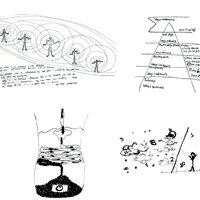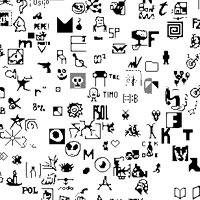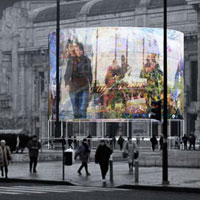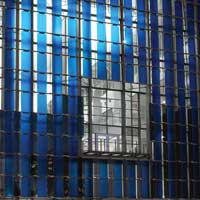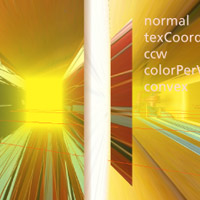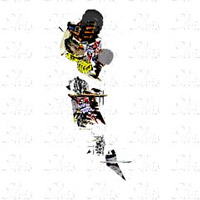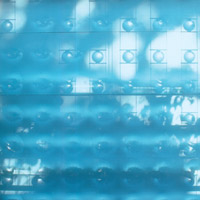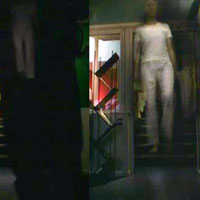 Third person is a temporal mirror. Using camera recognition technology, it replaces realtime video of people at the installation with clips recorded earlier. In the present, people’s movements are ‘averaged’, a little like a Muybridge photo sequence, so that they form the canvas onto which the previous footage then plays.
Third person is a temporal mirror. Using camera recognition technology, it replaces realtime video of people at the installation with clips recorded earlier. In the present, people’s movements are ‘averaged’, a little like a Muybridge photo sequence, so that they form the canvas onto which the previous footage then plays.
People are visible only as dark silhouettes against which, perhaps, you can see a previous clip of a figure in white descending the same staircase.
Third Person was shown at the ICA, London, as well as at LMCC, 4 Walls Film Club and by appointment.
 Marek Walczak is an artist engaged in how people can participate in physical and virtual spaces. Trained as an architect, his work includes Apartment which was shown at the Whitney Museum and many venues worldwide. The first Dialog Table is installed at the Walker Art Center, a shared interface the table replaces a keyboard and mouse with gesture recognition technology. Current projects bridge physical installations with user interaction, including a one block long facade at 7 World Trade Center that reacts to pedestrians walking beneath it.
Marek Walczak is an artist engaged in how people can participate in physical and virtual spaces. Trained as an architect, his work includes Apartment which was shown at the Whitney Museum and many venues worldwide. The first Dialog Table is installed at the Walker Art Center, a shared interface the table replaces a keyboard and mouse with gesture recognition technology. Current projects bridge physical installations with user interaction, including a one block long facade at 7 World Trade Center that reacts to pedestrians walking beneath it.
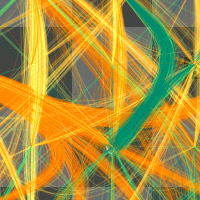
 Dialog Table is a shared interface where you use hand gestures to discover more about any dynamic information. Several people can gather around and together explore the table’s movies, narratives and 3D journeys. The table provides an opportunity for people to discuss with each other their thoughts on what they have seen, whether it be an artwork. a game or a service.
Dialog Table is a shared interface where you use hand gestures to discover more about any dynamic information. Several people can gather around and together explore the table’s movies, narratives and 3D journeys. The table provides an opportunity for people to discuss with each other their thoughts on what they have seen, whether it be an artwork. a game or a service.